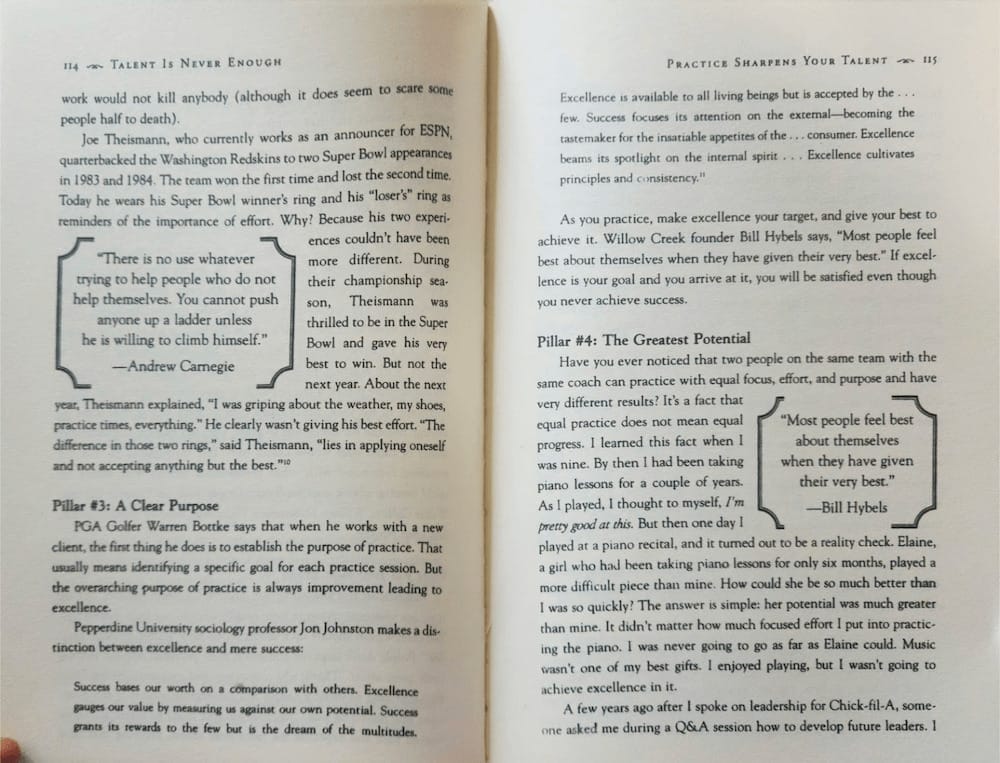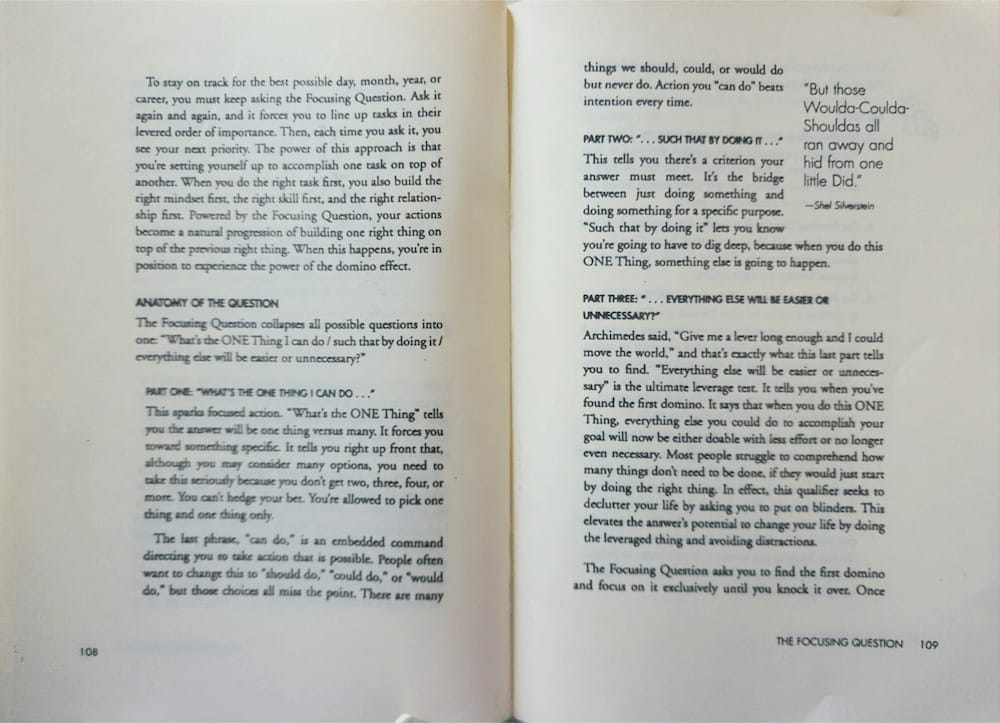Many readers, myself included, like to annotate books as they read, and they usually do this in the book’s margins. Some nonfiction authors, however, use sidebars to make their own annotations; they provide additional context, anecdotes, or graphics to enhance the reader’s experience and facilitate a deeper understanding of the subject matter. These sidebars are great for breaking up dense text, offering quick facts, and incorporating related quotes, or real-life examples.
Some authors use varied layouts, fonts, and colors in their sidebar designs to make them visually appealing, engaging, and memorable. This makes it easier for your readers to navigate and retain information.
In this article, we’ll explore five nonfiction books that use sidebars creatively, as well as some best practices for using sidebars.
In this article, we’ll cover 5 examples of stunning sidebar designs plus some best practices:
5 Nonfiction Books with Stunning Sidebar Designs
Sidebars are rarely found in novels. But they are widely used in nonfiction books, particularly those that are meant to educate their readers rather than purely entertain them. Here, we’ll look at five fantastic sidebar designs in nonfiction books for all ages.
1. 48 Laws of Power by Robert Greene
The highly controversial book, 48 Laws of Power, explores the principles of power dynamics and strategies for achieving and maintaining influence. Drawing on historical examples and anecdotes, each of the 48 laws exposes the complex dynamics of human interactions and interpersonal relationships in various contexts.

While the content of the book itself is pretty self-explanatory, Greene took the time to provide extra context in the book’s sidebars. Many pages of the book feature sidebar quotes from philosophers and thinkers like Niccolo Machiavelli, Voltaire, King Louis XIV, Arthur Schopenhauer, and Napoleon Bonaparte.
He also included proverbs and folktales from various cultures, as well as excerpts (usually stories) from prominent writings, such as the Mahabharata and The Chinese Looking Glass.
2. Talent Is Never Enough by John C. Maxwell
Talent Is Never Enough is a motivational and self-help book that expounds on the idea that talent alone is not sufficient for success. Maxwell argues that while talent is important, other factors such as attitude, character, and commitment are equally crucial for reaching one’s full potential.

The book provides practical insights and actionable advice to help individuals develop a well-rounded set of qualities that go beyond raw talent. It also emphasizes the importance of continuous learning and personal growth in achieving lasting success.
To buttress his points, Maxwell included, in the book’s sidebars, appropriate quotes by successful people such as Louis L’Amour, Andrew Carnegie, Johann von Schiller, Margaret Jensen, and Oprah Winfrey.
In some pages, he quotes proverbs and gives a one-sentence summary of specific sections. This makes it easy for readers to get takeaways and remember the key points of the book.
3. The One Thing by Gary Keller and Jay Papasan
The One Thing is a self-help and productivity book that focuses on the concept of prioritization and the pursuit of one’s most important goals. Keller and Papasan argue that by identifying and concentrating on the single most crucial task—the “one thing”—individuals can achieve greater success and fulfillment in various aspects of their lives.
The book provides a framework for goal-setting, time management, and decision-making, emphasizing the power of focus and the impact it can have on personal and professional achievements.

Through anecdotes, research, and practical advice, Keller and Papasan encourage readers to simplify their lives, eliminate distractions, and dedicate their energy to the essential tasks that align with their long-term objectives.
Just like Robert Greene and John C. Maxwell, Keller and Papasan populated their book’s sidebars with quotes from prominent people, such as Mark Twain, Johanna Wolfgang von Goethe, Patricia Cohen, George Anders, and Shel Silverstein.
4. 6,000 Amazing Facts by Miles Kelly
6,000 Amazing Facts by Miles Kelly is a comprehensive collection of fascinating pieces of information spanning various topics, including space, the planet Earth, the ocean, dinosaurs, and wildlife. This book is a treasure trove of knowledge with a user-friendly format that makes it easy for readers to browse.

In this book, Miles Kelly uses colorful, index-note-like illustrations to provide unpopular facts and additional context to the topics and images being talked about (as seen above). Not only does the colorful sidebar design make the book engaging, but it also serves readers who love to discover intriguing and surprising tidbits of knowledge.
5. HTML & CSS: Design and Build Websites by Jon Duckett
HTML & CSS: Design and Build Websites by Jon Duckett introduces people with little to no coding knowledge to the world of web development. The book is designed to be visually appealing, with a layout that incorporates plenty of images and diagrams to aid understanding. It covers the basics of HTML (Hypertext Markup Language) and CSS (Cascading Style Sheets), the fundamental building blocks of web design.


The book starts with an overview of how the web works and then delves into HTML, teaching readers how to structure content on a webpage. It covers topics such as text, links, images, tables, and forms. After establishing a foundation in HTML, the book transitions to CSS, explaining how to style web pages to create visually appealing designs with concepts like color, typography, layout, and responsive design.
Some pages feature large images of a web browser or code editor, and Duckett explains each visible element in the sidebars of the pages. For example, in the images above, Duckett uses sidebars to explain the steps involved in creating a web page on a PC. This allows readers to visualize and enact the process on their own computers, aiding comprehension.
8 Best Practices for Using Sidebars in Nonfiction Books
If you’re a nonfiction author who wants to use sidebars in your book design, here are some best practices to keep in mind:
- Relevance to main content. Ensure that the content in the sidebars is directly related to the main text. Sidebars should complement and enhance the reader’s understanding of the core material rather than distract or confuse them.
- Use visuals. Incorporate relevant visuals such as images, charts, or diagrams in sidebars to make the information more engaging and easier to understand.
- Use interactive elements. Depending on the format of the book, consider using interactive elements such as links, QR codes, or references to online resources within sidebars for readers who want to explore further. This is especially important if you’re writing an academic book.
- Visual consistency. Maintain a consistent visual style for sidebars throughout the book. This includes using the same font, color scheme, and formatting to create a cohesive and professional appearance.
- Clear designation. Clearly distinguish sidebars from the main text to help readers identify supplementary content easily. You can do this through the use of borders, shading, different fonts, or other formatting elements.
- Strategic placement. Place sidebars strategically, ensuring they appear at relevant points in the main text. You can use them to provide examples, anecdotes, definitions, or additional context right when the reader might find it most useful.
- Test with readers. If possible, test the book with a sample of your target audience to gather feedback on the effectiveness of the sidebars. This can help identify whether readers find them helpful or if adjustments are needed.
- Review for updates. Regularly review and update sidebars, especially if the book is revised or republished. Outdated information in sidebars can lead to confusion or misinformation.
Enhance the Reading Experience with a Creative Sidebar Design
Sidebars allow you to provide readers with supplementary content, which encourages deeper exploration of key concepts, anecdotes, or visual elements without disrupting the flow of the main text.
The evolving landscape of book design underscores the importance of balancing informative depth with visual appeal, creating a symbiotic relationship between the main narrative and its accompanying elements. Thus, using creative sidebar design elevates the nonfiction reading experience, transforming it into a more immersive and insightful journey for curious minds.
If you’re currently working on your nonfiction book (or are planning to write one), you’d do well to check out our Nonfiction Outline Template. In this template, you get 25 pre-formatted pages structured to industry standards, including a title page, table of contents, and chapter structures, to name a few.




